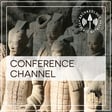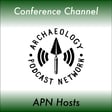
0022 - HHC2016 - Valeria Amoretti
Archaeological Heritage in Naples: Hidden or Used?
Valeria is an Archaeologist and Physical Anthropologist with a great passion for Cultural Anthropology. She achieved her degree in Conservation of Cultural Heritage in Pisa University. She is specialized in Forensic Anthropology, in Paleopathology, in Christian Archeology and Museum Sciences. She was Research Fellow in L’Aquila University, were she had her PhD in medieval Archeology. She is an archeologist and anthropologist both in the fieldwork and in laboratory, and thanks to this ability she is now a collaborator at the Superintendence of many Italian Regions (Liguria, Toscana, Trentino, Abruzzo). She took part in 52 archeological campaigns, 32 lab works on materials and 30 publications. The will to make known the work and the discoveries related to the archeology and the heritage led her to attend a second PhD in Architecture, Design and Cultural Heritage in Naples, with the specific intent to study how to communicate archeology. She fell in love with this city, its connected heritage and its unique cultural anthropology. Currently she is working on a PhD Thesis on “Musealization of Human Remains”, and she is attracted to the perspectives of the application of new technologies to cultural heritage for the enhancement of archeological sites and objects.

